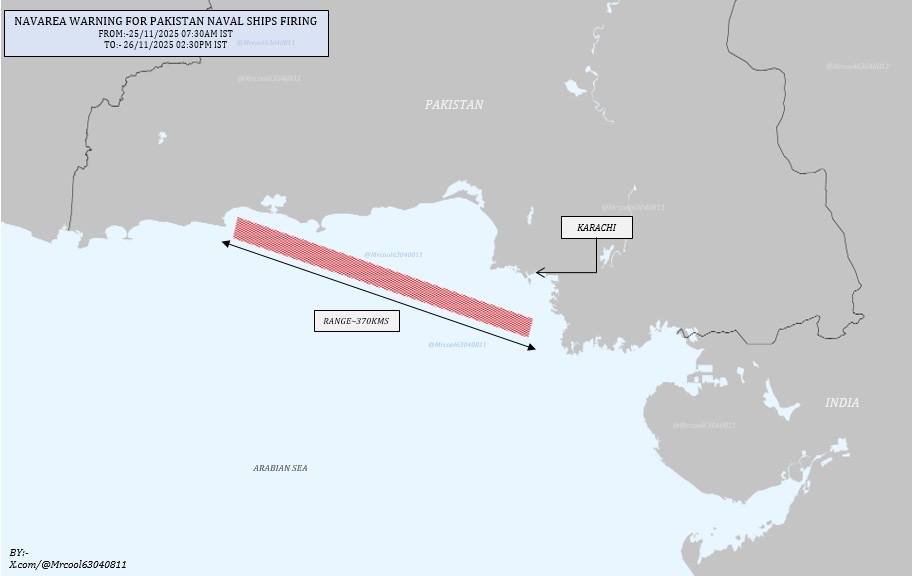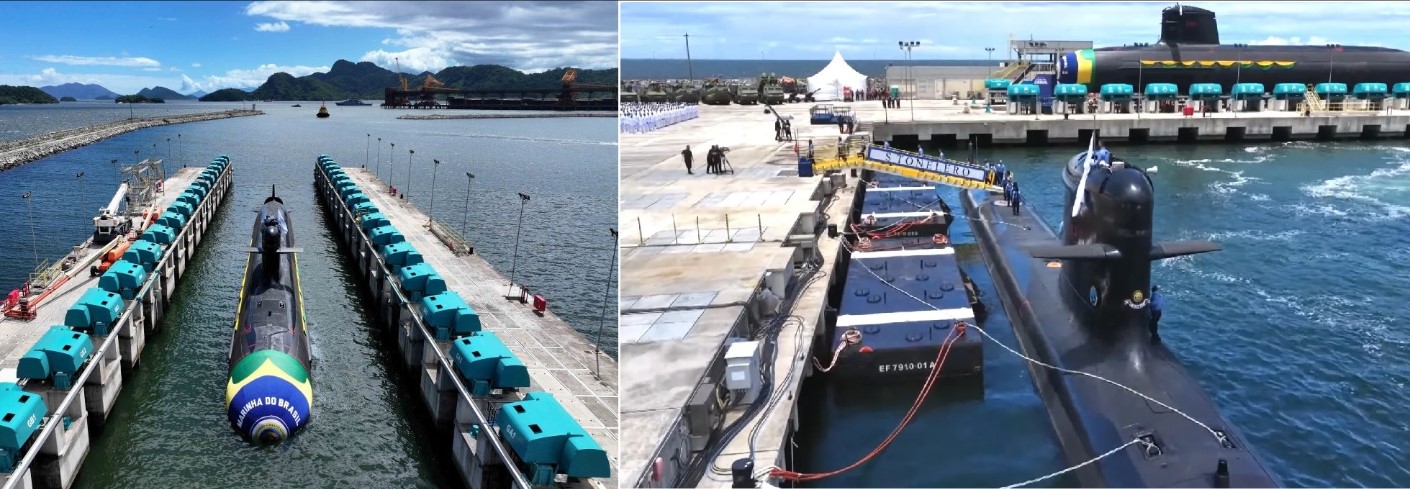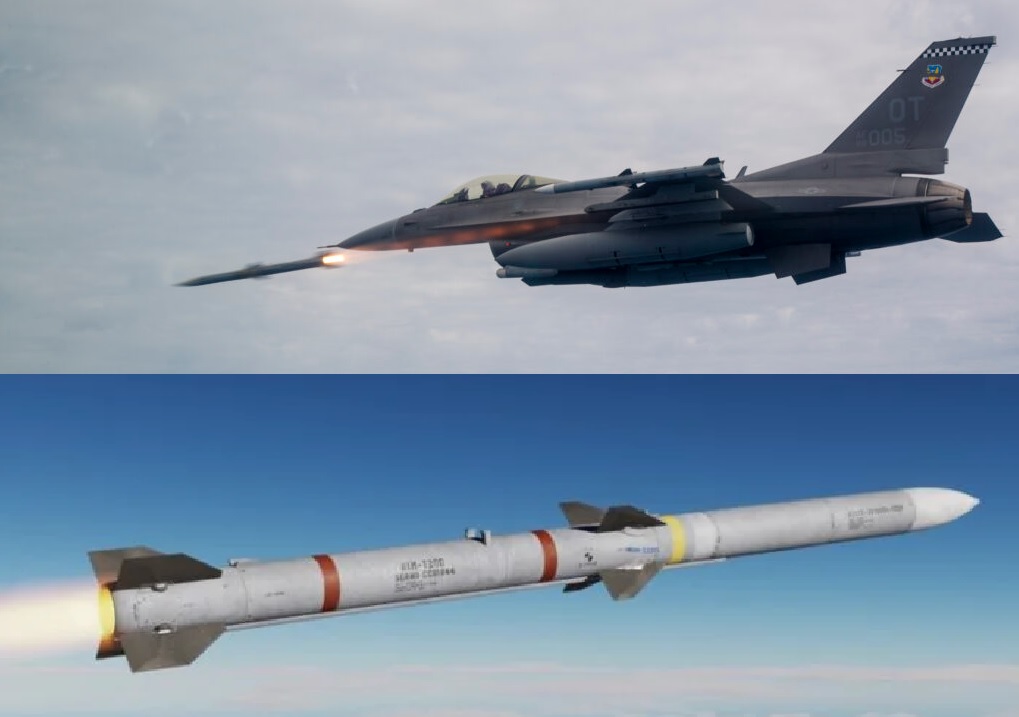Pakistan Conducts New Test of P-282 “SMASH” Anti-Ship Ballistic Missile, Questions Over Its True Anti-Ship Capability

The Pakistan Navy has carried out another test flight of its indigenously developed ship-launched ballistic missile, the P-282 “SMASH,” on November 25, 2025, reinforcing Islamabad’s determination to expand its domestic missile-development capabilities. The launch, observed by the Chief of the Naval Staff along with senior scientists and engineers, marks the latest milestone in Pakistan’s evolving naval strike programme.
A System Still in Development
According to official statements, SMASH is designed to strike both maritime and land targets, aided by what the Navy describes as a modern guidance package aimed at improving accuracy and enabling terminal manoeuvring. Despite these claims, the Navy has not revealed definitive specifications. Defence sources commonly estimate an approximate range of 350 km, and Pakistani officials stress that the missile is intended solely for national operational use, not for export.
This launch follows the missile’s first publicly announced flight in November 2024, though some regional reports suggest two or three test events may have occurred. All known firings have originated from a Type 22P frigate, a platform frequently used in Pakistani missile trials.
From Early Cruise-Missile Rumours to Ballistic Reality
In its early stages, SMASH was widely speculated to be a supersonic anti-ship cruise missile. Later disclosures, however, confirmed that the system is a solid-fuel ballistic missile, conceptually similar to the CM-400 family. Defence outlet Quwa and other observers note that SMASH fits into Pakistan’s broader naval modernisation drive, which seeks to integrate multiple domestically developed strike weapons into its surface fleet.
Yet the missile’s architecture does not resemble that of modern anti-ship ballistic missiles (ASBMs), which rely on seekers and manoeuvrable re-entry vehicles to hit moving ships at sea.
Narrow Flight Corridor Reveals a Non-Manoeuvring Missile
The most revealing information comes not from official statements, but from Pakistan’s own test-warning areas issued prior to launches. Analysts note that each SMASH test has 370 km long, But narrow Width flight corridor, a pattern strongly associated with non-manoeuvring ballistic trajectories.
Several elements stand out:
-
No terminal seeker—neither radar, optical, nor infrared—has been shown.
-
No evidence of manoeuvrable re-entry features appears in imagery or footage.
-
The narrow, corridor-shaped warning zones indicate that the missile’s path is fixed and predictable, with little or no lateral manoeuvring capability.
If Pakistan had equipped SMASH with even a basic terminal seeker or a manoeuvrable re-entry vehicle (MaRV), the warning area would have been much wider, similar to China’s DF-21D or DF-26 anti-ship ballistic missile tests. Instead, SMASH’s consistent use of narrow corridors strongly suggests that it follows a purely ballistic descent, unable to alter its trajectory during the final phase of flight.
A Missile Suited Only for Fixed Targets
The absence of a terminal seeker severely restricts SMASH’s operational use. A ballistic weapon depending solely on pre-programmed coordinates cannot correct its path mid-flight, making it incapable of reliably striking a moving naval target.
Based on its design, analysts conclude that SMASH can realistically be used against:
-
Docked ships
-
Anchored vessels
-
Naval facilities such as depots, jetties, radars, fuel farms, or command posts
-
Hardened coastal or land-based fixed sites
Even minor changes in a ship’s position—such as a vessel shifting within a harbour—could result in a complete miss. Its effectiveness therefore remains confined to fixed and stationary targets, rather than manoeuvring ships at sea.
Lessons Drawn From Operation Sindoor
Observers often reference Operation Sindoor, where Pakistan reportedly employed a CM-400-derived ballistic weapon against an Indian S-400 air-defence site. The Indian unit relocated shortly before impact, and the missile simply continued toward the pre-set coordinates, hitting empty ground.
This incident highlighted the limitations of coordinate-based ballistic weapons without terminal seekers, and SMASH appears to operate under the same constraints.
Solid Rocket Motor and Structural Features
Technical assessments describe SMASH as a solid-fuel, single-stage ballistic missile capable of achieving high-supersonic terminal velocity, aligning with the design of short-range ballistic systems. The missile’s compact form factor suggests optimisation for box-canister storage and launch aboard naval vessels.
Analysts believe SMASH is conceptually linked to the CM-400AKG air-launched missile, though the naval version lacks the radar seeker of the airborne variant.
Its guidance suite likely consists of:
-
Inertial Navigation System (INS)
-
Satellite navigation updates (BeiDou, GPS, or GLONASS)
-
Pre-loaded target coordinates
No available information suggests the presence of terminal imaging, radar homing, or manoeuvring fins. This reinforces the assessment that SMASH cannot adapt its course during re-entry.
Why Pakistan Continues to Develop SMASH
Despite its limitations, the Pakistan Navy maintains considerable interest in SMASH. Naval officials argue that the missile provides a low-cost, long-range precision-strike option without relying on cruise missiles, which are expensive, slower, and more complex.
In Pakistani operational thinking, SMASH’s value lies in its ability to:
-
Threaten enemy naval bases and coastal infrastructure
-
Conduct rapid-strike missions using readily deployable shipboard canisters
-
Support Pakistan’s long-term goal of indigenous missile production
-
Deliver high-speed, high-energy impacts against hardened fixed targets
For Pakistan, SMASH is therefore viewed not as a sea-denial weapon, but as a coastal strike system designed to hit static high-value targets.
ASBM Capability Remains Unproven
For SMASH to qualify as a true anti-ship ballistic missile, Pakistan would need to demonstrate:
-
A terminal seeker capable of identifying and tracking ships
-
In-flight manoeuvring or MaRV capability
-
Wider flight-warning corridors consistent with manoeuvrable missiles
None of these capabilities have appeared in testing or official communication.
As a result, analysts widely classify SMASH as a fixed-target ballistic strike weapon, not a modern ASBM capable of engaging moving warships.
The November 2025 test reflects Pakistan’s continued commitment to indigenous missile development. However, all available evidence—especially the consistently narrow test-warning corridors—indicates that SMASH remains a non-manoeuvring, coordinate-guided ballistic missile.
Without a terminal seeker or manoeuvrable re-entry vehicle, SMASH is likely to remain an effective tool for coastal and harbour-target strikes, but not the sea-denial anti-ship system early speculation once suggested.
✍️ This article is written by the team of The Defense News.






